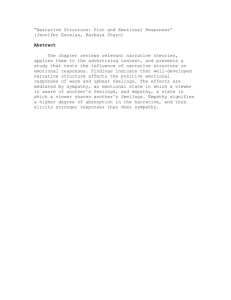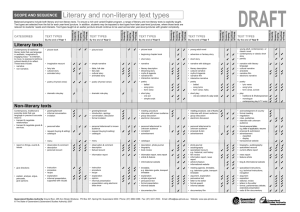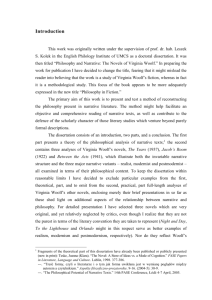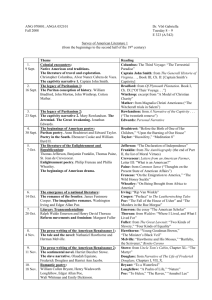Epic of Gilgamesh
advertisement
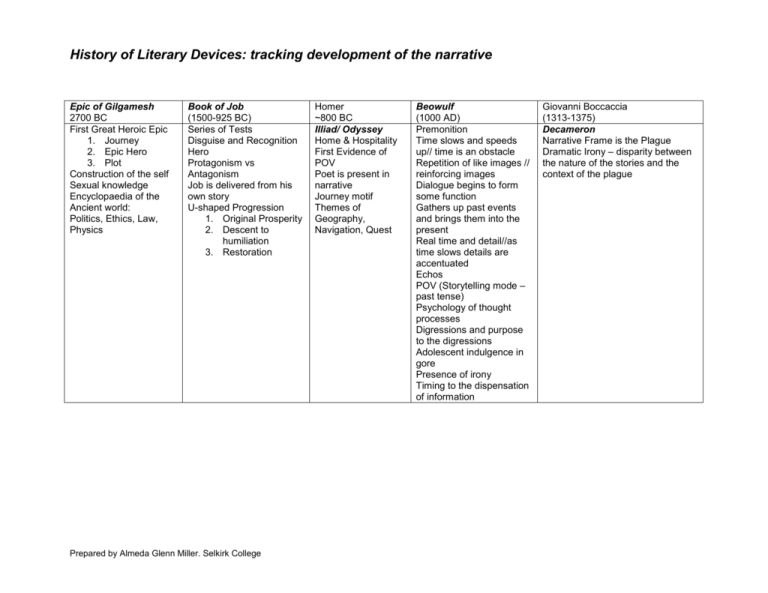
History of Literary Devices: tracking development of the narrative Epic of Gilgamesh 2700 BC First Great Heroic Epic 1. Journey 2. Epic Hero 3. Plot Construction of the self Sexual knowledge Encyclopaedia of the Ancient world: Politics, Ethics, Law, Physics Book of Job (1500-925 BC) Series of Tests Disguise and Recognition Hero Protagonism vs Antagonism Job is delivered from his own story U-shaped Progression 1. Original Prosperity 2. Descent to humiliation 3. Restoration Prepared by Almeda Glenn Miller. Selkirk College Homer ~800 BC Illiad/ Odyssey Home & Hospitality First Evidence of POV Poet is present in narrative Journey motif Themes of Geography, Navigation, Quest Beowulf (1000 AD) Premonition Time slows and speeds up// time is an obstacle Repetition of like images // reinforcing images Dialogue begins to form some function Gathers up past events and brings them into the present Real time and detail//as time slows details are accentuated Echos POV (Storytelling mode – past tense) Psychology of thought processes Digressions and purpose to the digressions Adolescent indulgence in gore Presence of irony Timing to the dispensation of information Giovanni Boccaccia (1313-1375) Decameron Narrative Frame is the Plague Dramatic Irony – disparity between the nature of the stories and the context of the plague History of Literary Devices: tracking development of the narrative Geoffrey Chaucer (1340-1400) Canterbury Tales Characterization Foreshadow/premonitions Story with in a story We begin to see deliberate literary devices Narrative intrusions Historical allegory to bolster argument Elements of satire Human frame Reversal of fortune Mock heroic Cervantes (1547– 1616) Don Quixote Rhythm in the language Repetition used as a comedic device Strong characterization Using opposites to emphasize the positive Listing Prepared by Almeda Glenn Miller. Selkirk College Defoe (1722) Moll Flanders First novel in the western tradition Episodic –sequential events Central Organizing Principle Confessional Anatomy Religious dedication to details of argument Jane Austin (1816) Emma Central organizing principle - community is the binding force, primarily interested in Social Context Atmospherics – changing seasons Linear progression of thought/plot The novel has at its heart a controlling idea/metaphor that has to have sufficient force to extend through the novel.








